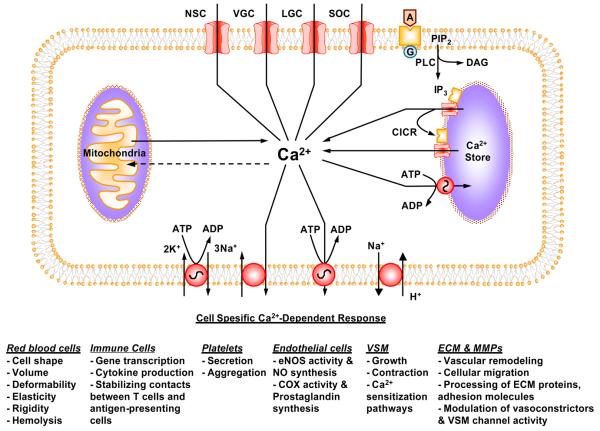Fig. 2.
Regulation of [Ca2+]i and Ca2+-dependent cellular response. During cell activation, Ca2+ is released from the intracellular stores through IP3-sensitive Ca2+ channels and the ryanodine-sensitive Ca2+-induced Ca2+ release mechanism. Extracellular Ca2+ enters the cell through voltage-gated, ligand-gated, store-operated, and nonspecific channels. The increased [Ca2+]i triggers specific responses in red blood cells, platelets, immune cells, endothelial cells, and VSM cells. When the cell stimulus is removed, [Ca2+]i returns back to normal level via the Ca2+-ATPase pump and Na/Ca exchanger. Also, the Na/K-pump and Na/H exchanger could affect the membrane potential and intracellular pH and further modify the Ca2+ response. Extremely high levels of [Ca2+]i are taken up by the mitochondria.

